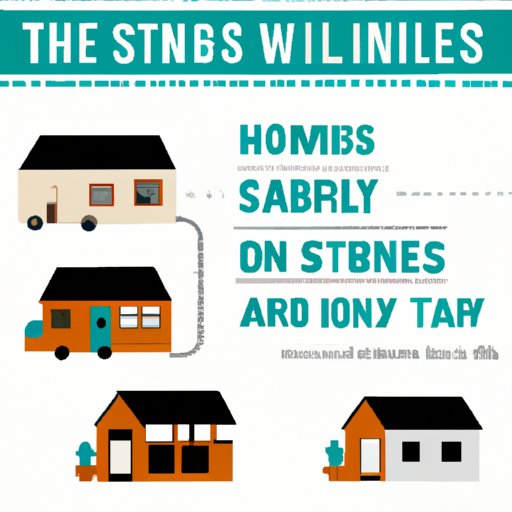Introduction
Over the past decade, the tiny house movement has gained incredible momentum, with more and more people choosing to downsize and live in smaller, more sustainable homes. In addition to the many personal benefits of tiny house living, there are also a growing number of individuals and groups interested in starting their own tiny home communities.
In this article, we’ll explore the steps necessary to start a tiny home community, including navigating zoning requirements, securing financing, building community, and incorporating sustainable practices.
Interviews with Existing Tiny Home Communities
If you’re considering starting your own tiny home community, it can be incredibly helpful to learn from the experiences of those who have gone before you. Be sure to research and connect with existing tiny home communities to gain insights into what has worked well and what hasn’t.
Through these interviews, you can learn about the community building strategies that they used and also ask them about their advice and experiences with legal and financial considerations.
It’s crucial to learn these things from people who have already managed to make it work. With the in-person interview process, the potential tiny home community owner has the ability to ask questions and learn more about the thriving community they are interviewing.
Zoning Requirements and Municipal Permits
Before starting a tiny home community, it’s important to understand the zoning requirements and municipal permits involved. Municipalities have different rules and regulations, and you’ll need to ensure you comply with these requirements before breaking ground.
A quick Google search for “tiny home zoning requirements in (your area)” will provide a good starting point for your research.
You’ll also want to engage with the local authorities to confirm the zoning and permit requirements. Some places require additional permits for utilities and other municipal services.
Going through this process will also give you an idea of other key details to consider when planning your tiny home community like age restrictions on the residents, the number of homes allowed in the community, and environmental standards that must be met.
Financing Options
Starting a tiny home community requires significant upfront costs, such as purchasing land and building the infrastructure, including utilities and communal spaces. As such, finding the right financing options is critical.
There are different financing options to explore, including conventional mortgage lenders, crowdfunding platforms, private investments, and community partnerships.
It’s important to weigh the pros and cons of each option before deciding which one is the best fit. For example, while conventional lenders may offer low rates, they may not have a lot of experience with tiny home financing.
A crowdfunding option may be the best financing option because it offers community members the chance to support the project. However, smaller crowdfunding sums might make it difficult to get the startup costs covered.
Community Building
Building a tiny home community goes beyond simply providing a place to live. Establishing a sense of community among the residents is critical to the success of your project.
From organizing community events to establishing shared spaces and common recreational equipment, building a sense of camaraderie helps to create a supportive and engaged living environment.
Some great ways to build this community are to hold weekly group meals, organize social outings for the residents, and provide shared volunteer opportunities.
Environmental and Sustainability Considerations
One of the hallmarks of tiny homes is their small ecological-footprint. As such, it’s essential to incorporate environmental and sustainability considerations into your tiny home community.
Some ways to achieve this objective include designing the housing units to be energy-efficient, using sustainable building materials, installing solar panels, and developing green spaces in the community.
It’s also important to instill eco-friendly habits in the residents, such as promoting water conservation, recycling, and energy-efficient practices.
Choosing the Right Location
Location is an essential factor when starting a tiny home community. When determining the right location, it’s important to consider the accessibility and proximity to urban areas, natural surroundings, and green spaces. For example, proximity to public transportation or retail centers can be important factors that govern location choices.
You’ll also need to consider the local community and how your tiny house community may affect it. As such, ensure you take all relevant factors into consideration before settling on a location.
Legal Considerations
Starting a tiny home community also requires an understanding of the legal considerations involved. This includes drafting appropriate bylaws and agreements between residents as well as ensuring compliance with zoning and permitting requirements.
In addition, you’ll need to ensure that the infrastructure that you build meets all safety and sustainability regulations. Be sure to research all legal requirements before you embark upon community development.
Conclusion
Starting a tiny home community can be a significant undertaking, but the rewards of pursuing community building and sustainability goals can be substantial.
By careful research and planning, you can navigate the zoning and financial obstacles, develop an engaged and supportive community, and incorporate sustainable practices.
Don’t be afraid to reach out to existing tiny home communities and learn from their experiences as you progress towards your goal of starting a new community that reflects your values.
(Note: Is this article not meeting your expectations? Do you have knowledge or insights to share? Unlock new opportunities and expand your reach by joining our authors team. Click Registration to join us and share your expertise with our readers.)
